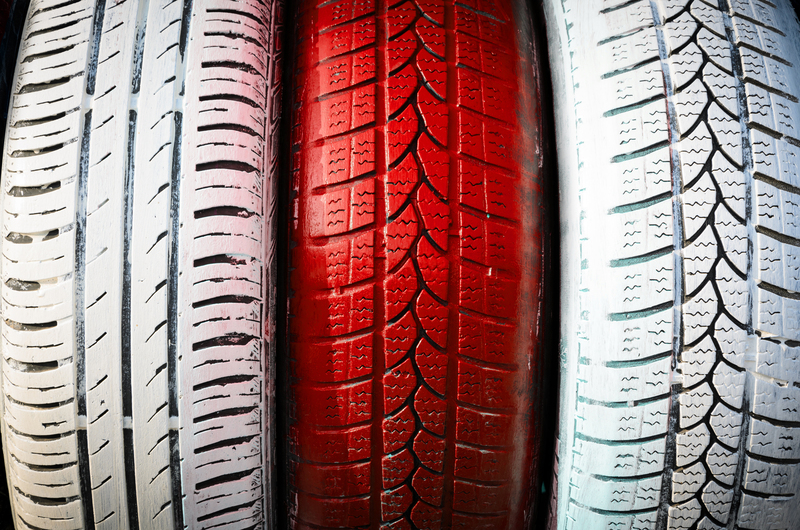Cutting-Edge Ways to Tackle Manufacturing Waste
In today's rapidly evolving industrial landscape, the challenge of reducing manufacturing waste has become more pivotal than ever. As industries across the globe strive to achieve sustainability and efficiency, innovative strategies to minimize waste are crucial. This article explores cutting-edge methods that are transforming how manufacturers address waste, ensuring a healthier planet and a more profitable industry.
Understanding the Importance of Minimizing Manufacturing Waste
Waste in manufacturing not only impacts the environment but also has significant financial implications. From increased disposal costs to lost resources, waste can erode a company's bottom line. By implementing strategies that lower waste, businesses can enhance their sustainability credentials, reduce costs, and improve their market reputation.
The Environmental and Economic Impact of Manufacturing Waste
Manufacturing waste contributes significantly to environmental degradation. Landfills overflowing with industrial waste release harmful gases, while improperly disposed waste can pollute water bodies and soil. Economically, managing waste effectively can reduce operational costs and improve resource efficiency. Thus, the dual impact of waste reduction underscores its importance in modern manufacturing.


Innovative Strategies to Tackle Manufacturing Waste
1. Lean Manufacturing Principles
Lean manufacturing focuses on minimizing waste without sacrificing productivity. This principle emphasizes identifying and eliminating steps in production that don't add value but consume resources. Strategies include:
- Streamlining production processes for efficiency.
- Continuous assessment and reduction of waste points.
- Engaging employees in identifying wasteful activities.
Adopting these practices not only reduces waste but also enhances overall production efficiency.
2. Embracing Circular Economy Models
The concept of the circular economy entails designing products for longevity, repairability, and recyclability. Unlike the linear economy model, where products have a defined endpoint, the circular model aims to keep resources in use for as long as possible. Key actions include:
- Designing products that can be easily disassembled and recycled.
- Implementing take-back programs to reclaim post-consumer materials.
- Collaborating with suppliers to use sustainable materials.
3. Advanced Waste Auditing Technologies
Using advanced technologies to audit and manage waste is becoming increasingly popular. Technologies such as IoT, AI, and data analytics offer comprehensive insights into waste generation patterns and help in devising targeted reduction strategies. These technologies enable manufacturers to:
- Monitor waste streams in real-time.
- Predict and prevent potential waste generation events.
- Optimize resource allocation and usage.
By providing a detailed understanding of waste production, these tools empower manufacturers to adopt more effective waste management practices.
4. Implementing Green Manufacturing Practices
Green manufacturing aims to use processes that reduce pollution, conserve energy, and minimize waste. This holistic approach involves:
- Using renewable energy sources to power manufacturing operations.
- Implementing water and electricity-saving technologies.
- Adopting eco-friendly materials and production processes.
By integrating environmental responsibility into production processes, manufacturers can significantly reduce their ecological footprint.
5. Using 3D Printing to Reduce Material Waste
3D printing technology, also known as additive manufacturing, uses
exact amounts of material needed to create parts, reducing excess. It allows for:
- Customization with minimal waste.
- Recycling and reusing the substrates for further production runs.
- On-demand production, minimizing overproduction waste.
This technology is incredibly effective in tailoring production and reducing material usage, setting a new standard in manufacturing.
6. Adopting Eco-Design Principles
Eco-design focuses on creating products with minimal environmental impact throughout their lifecycle. This involves:
- Selecting sustainable materials and suppliers.
- Designing for disassembly and recyclability.
- Reducing material use while maintaining product quality.
By prioritizing eco-design, manufacturers can reduce waste and produce environmentally-friendly products.
The Future of Waste Management in Manufacturing
As we look to the future, it's evident that sustainable manufacturing practices will become the norm rather than the exception. With continuous technological advancements and increasing pressure from both consumers and regulators, manufacturers must innovate to stay competitive. Emphasizing waste reduction not only aligns with environmental goals but redefines operational excellence.
The Role of Policy and Regulation
Governmental policies and regulations play a vital role in encouraging manufacturers to adopt waste-reduction measures. Incentives for sustainable practices, penalties for unsustainable waste management, and stringent waste disposal standards can drive change at a macro level, catalyzing industry-wide adoption of cutting-edge waste management practices.
Collaborative Efforts and Industry Partnerships
Collaboration within the manufacturing industry and beyond is crucial for effective waste reduction. Partnerships between manufacturers, suppliers, and waste management companies can facilitate:
- The sharing of best practices and technologies.
- The development of improved recycling and waste management solutions.
- Increased access to sustainable materials and resources.
By working together, these entities can create a more sustainable manufacturing ecosystem.
Conclusion
The challenge of addressing manufacturing waste is multifaceted, requiring a blend of innovative strategies, technological tools, and collaborative efforts. As industries evolve, the integration of lean principles, circular models, and advanced technologies offers a viable path towards minimizing waste. By prioritizing eco-friendly practices and embracing change, manufacturers not only contribute to environmental preservation but also secure their longevity and profitability in an ever-evolving market.